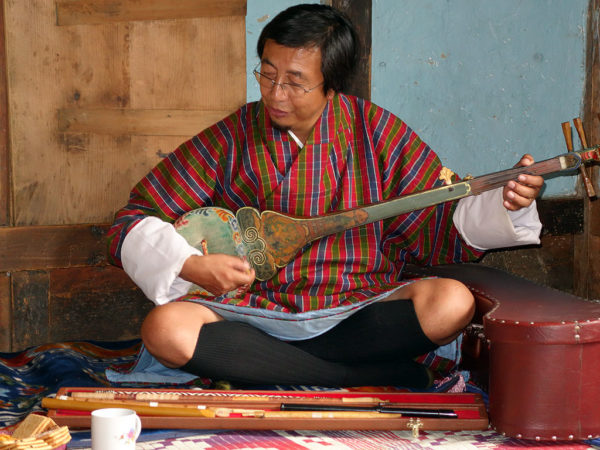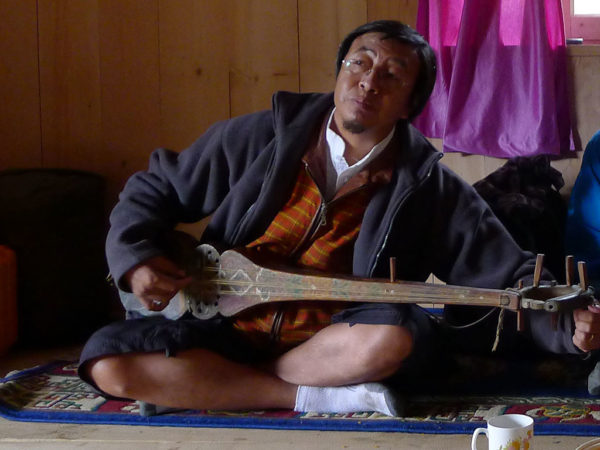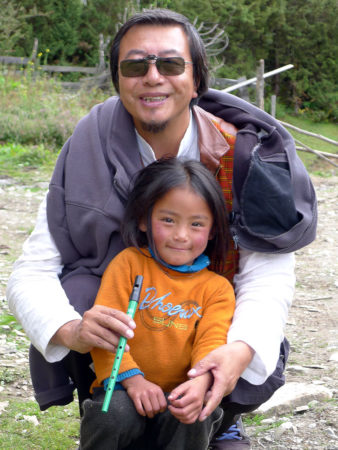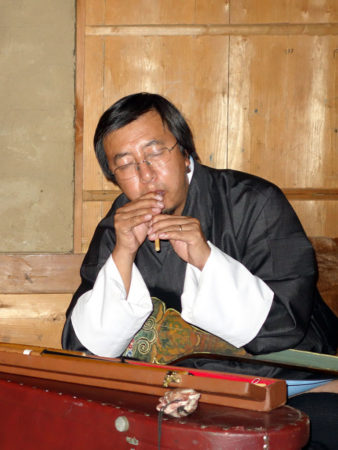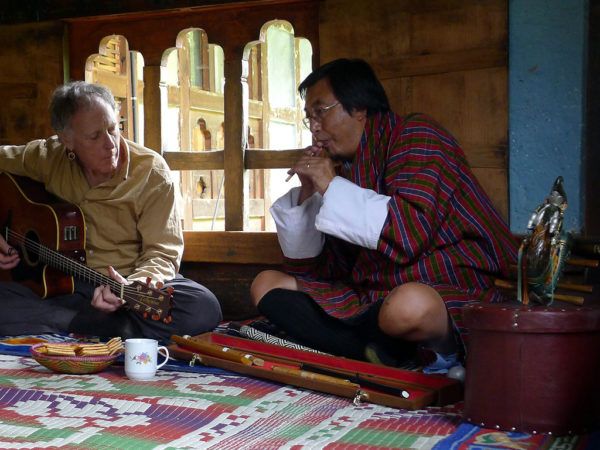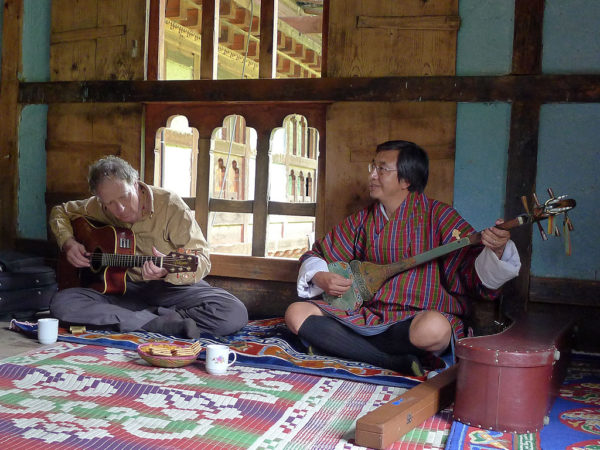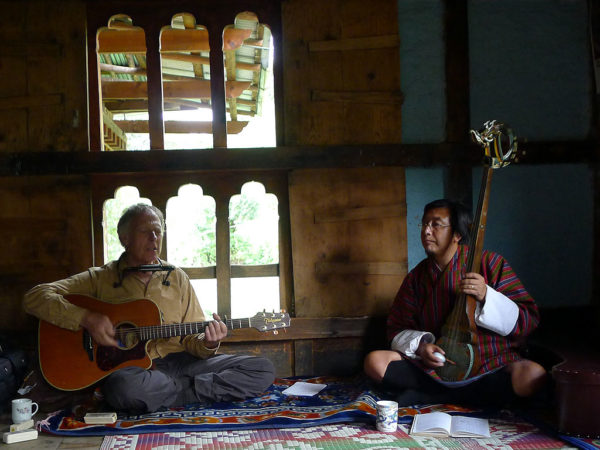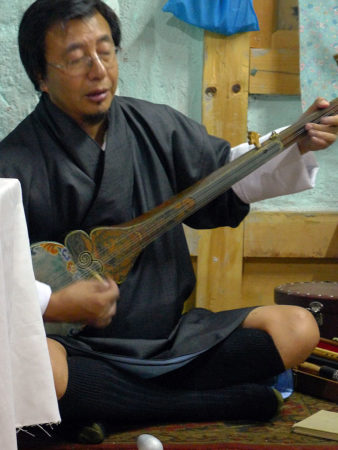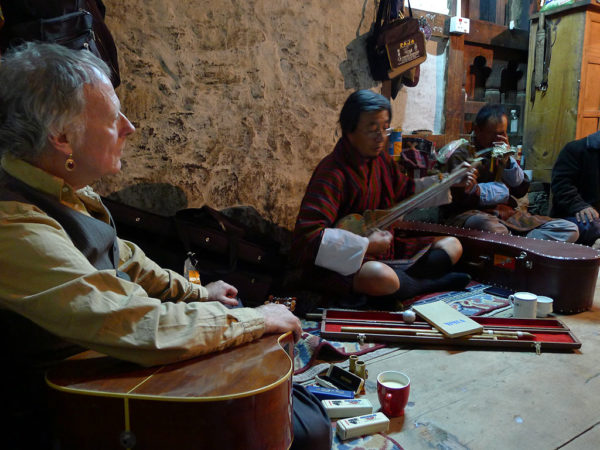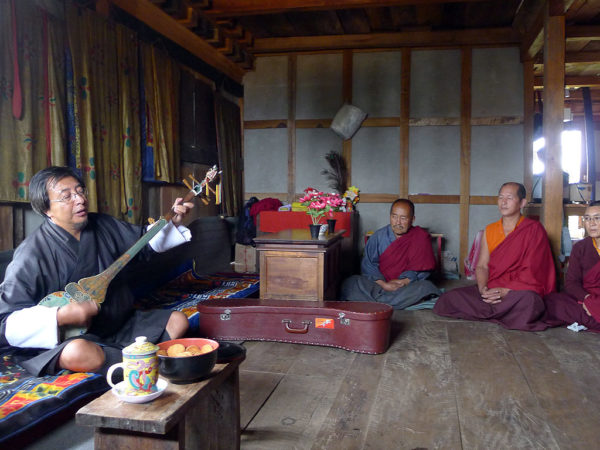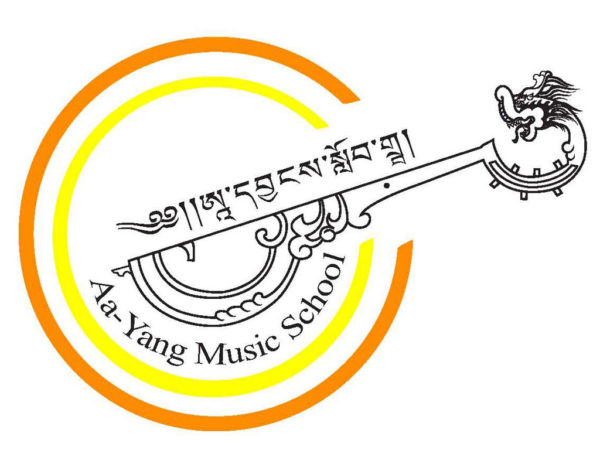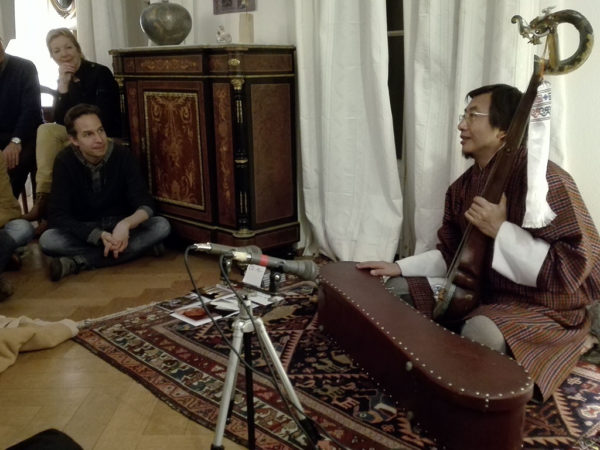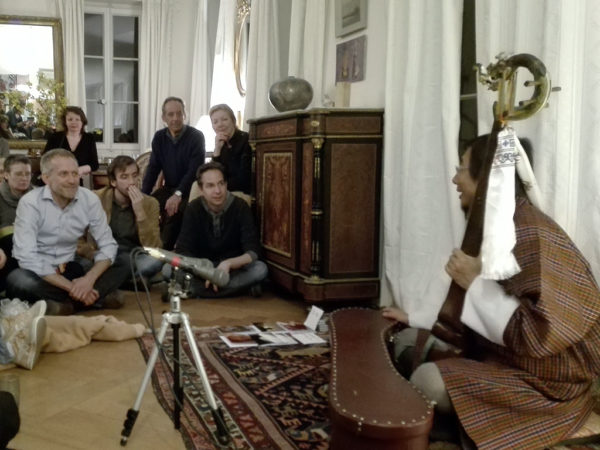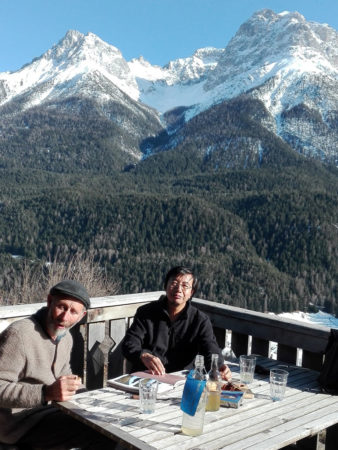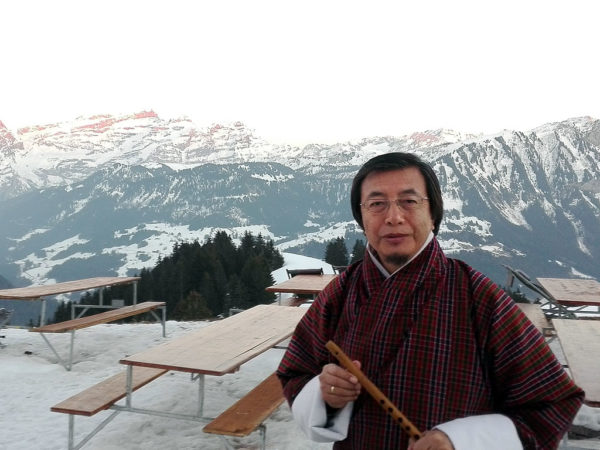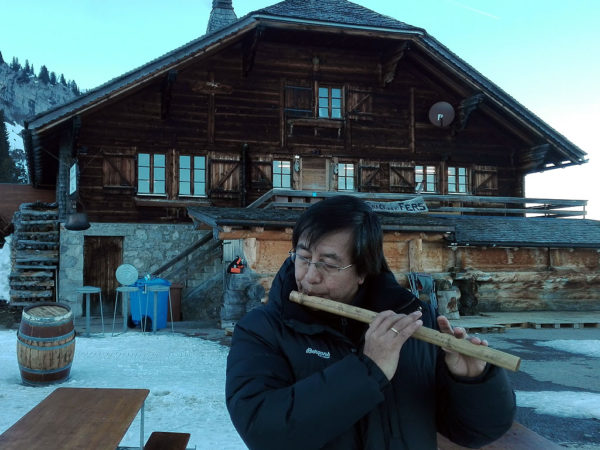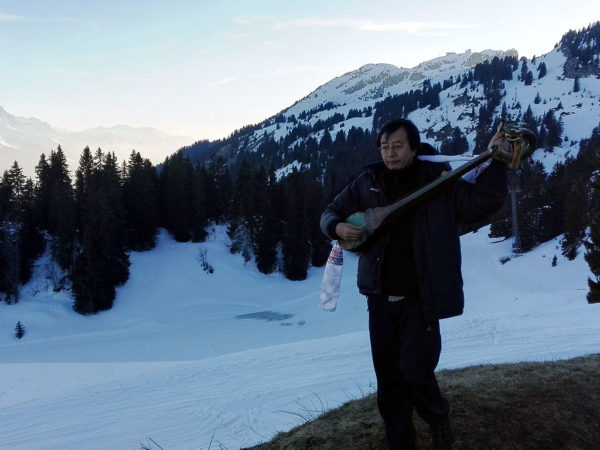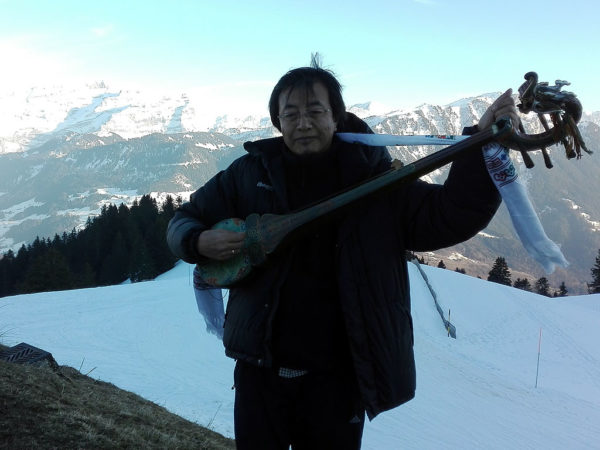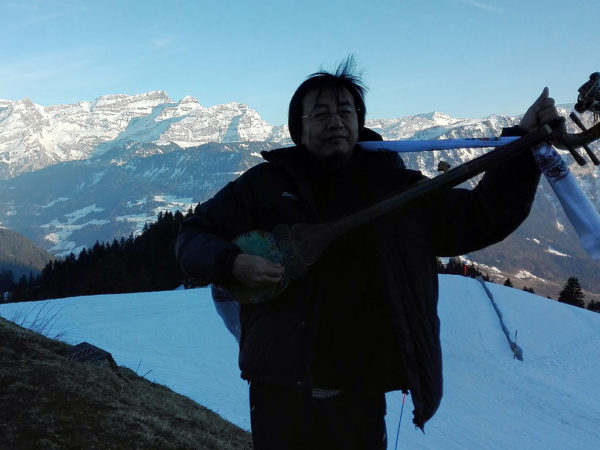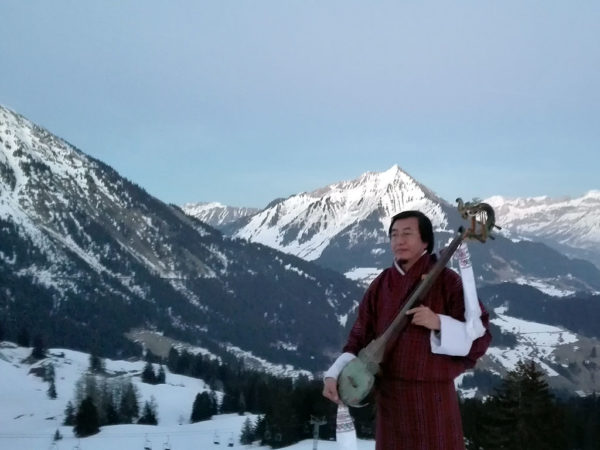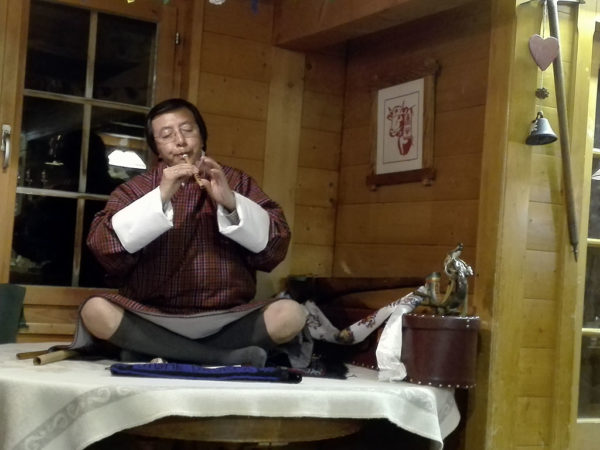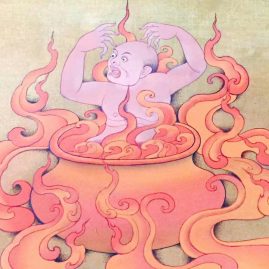About Jigme
Jigme Drukpa is a popular Bhutanese musician. He studied ethno-musicology in Norway where he also completed a master’s degree in music therapy in 2017. Jigme speaks fluent Norwegian. Jigme wants to keep Bhutanese musical traditions and knowledge alive. His aim is not only to inspire the youth’s interest in traditional and modern music but also to explore ways of applying music therapeutically.
In 2010 he founded the travelling Aa-Yang Music School where he is also the artistic director. Since 1993, Jigme traveled and performed in over 200 cities in about 34 countries. He represented Bhutan in many national and international seminars and workshops.
Jigme composed the background music for Dzongsar Khyentse’s movies Travellers and Magicians and Hema Hema Sing me a song, where he also played a role.
He worked with musicians from various backgrounds in India, Nepal, Tibet, China, Japan, Iran, Norway, Netherlands, Sweden, Switzerland, Russia and USA, etc. Jigme is a member of the Society for Ethnomusicology, USA, and Program Secretary for the Bhutan-India Friendship Association. He is also the Interim President of the Norway-Bhutan friendship association.
Music traditions in Bhutan
Bhutanese music mirrors Bhutanese culture and transmits social values. There are broadly two kinds of Bhutanese music: traditional and modern. Traditional music includes a spectrum of sub-genres, ranging from folk music to religious song. Some genres of traditional Bhutanese music intertwine vocals, instrumentation, and theatre and dance, while others are mainly vocal or instrumental.
Music and social life in Bhutan
Previously, Bhutanese villagers had strong trade and barter links across valleys in order to sustain themselves. The annual migrations, along old footpaths, to different valleys were embedded in the neypo-network, a web of traditional cross-valley host relations handed down within the family. Such yearly barter trips sustained the families and renewed bonds between host families of different valleys. Hospitable gatherings were characterized by sharing food and drink, gift-exchange, and singing and dancing as well as storytelling. This nurtured thuenlam, harmonious relations and cooperation, between the Bhutanese villagers. Singing dialogues also were quite common during joint farm work in the villages, mostly women teasing men and vice versa. Although traditional “singing competitions” are dwindling, music still promotes Gross National Happiness (GNH) among the Bhutanese.
Instruments
Used in traditional and modern genres: lim (six-holed flute), piwang (two-stringed fiddle), dranyen (Himalayan lute)
Others: thangthang namborung (four-holed bamboo bass flute), kongkha (bamboo mouth harp), gombu (bull or buffalo horn), yangchin (dulcimer, introduced from Tibet)
Religious: chaling (oboe), dung (long trumpets), drums
Folk music
boedra (evolved out of court music), zhungdra (considerered secular but often about Buddhist allegories), zhey and zhem (choreographed vocal performances ), tsangmo (very popular among people, sung in call-and-reply fashion often between men and women), lozey (themed on traditional customs, dress and literature, also often in call-and-reply fashion)
Modern music
Rigsar (new idea, knowledge), popular modern music


